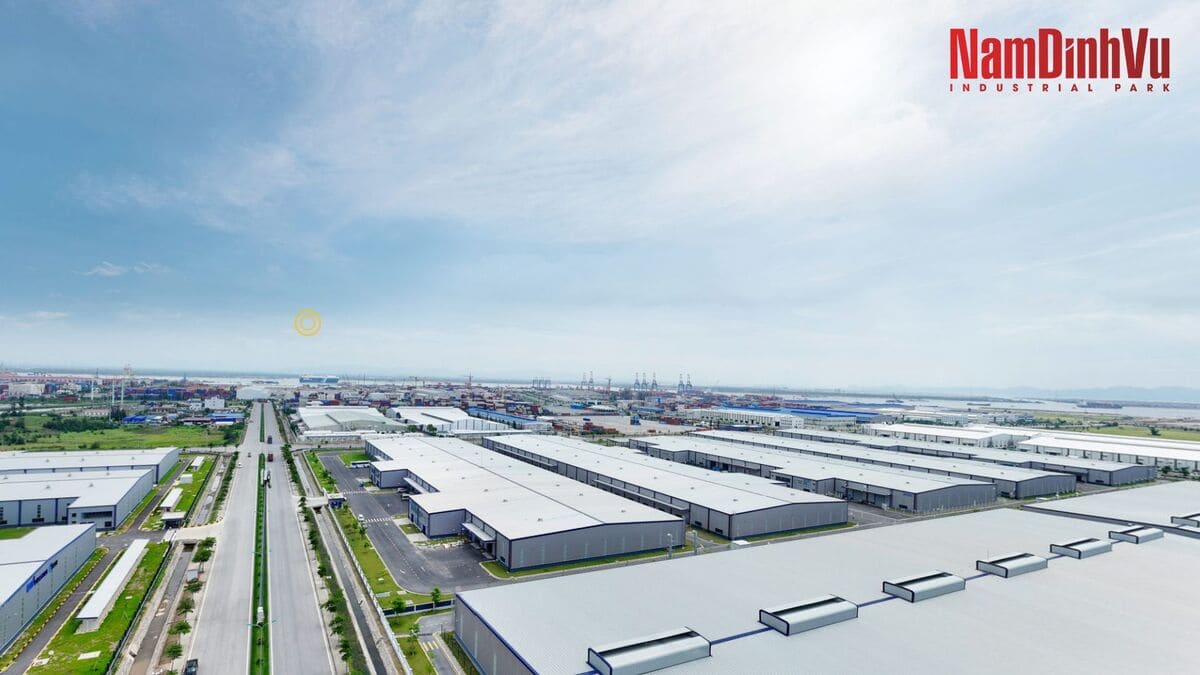Vietnam’s industrial real estate market growth is poised for a transformative phase in 2025. With strong policy backing, increased foreign direct investment (FDI), and growing interest in manufacturing relocation, the country’s industrial estates are emerging as a top destination for global investors.
Overview of Vietnam Industrial Estate
Vietnam has rapidly developed its industrial estate network over the past two decades, especially in key economic zones such as the North (Hanoi, Bac Ninh, Hai Phong), Central (Da Nang, Quang Nam), and the South (Ho Chi Minh City, Binh Duong, Dong Nai). This expansion reflects the country’s broader efforts to attract foreign direct investment and enhance its industrial capacity. As of early 2025, Vietnam boasts over 400 industrial zones nationwide, many of which are operating near full occupancy. The growing demand for industrial space underscores Vietnam’s position as an increasingly vital player in the global supply chain. (1)
These estates support a wide range of industries including electronics, textiles, auto parts, and logistics. The diversification of sectors within these zones demonstrates the flexibility and adaptability of Vietnam’s industrial landscape. Strategic locations near seaports and border crossings have also boosted Vietnam’s appeal as a manufacturing hub in Asia. Moreover, improvements in infrastructure and regulatory frameworks have further contributed to the country’s competitiveness in the region.
Development Plans for Vietnam industrial estate
In response to rising investment demand and the need for balanced regional growth, Vietnam is charting an ambitious roadmap to expand and modernize its industrial estate network. The plan outlines clear goals for land development, sustainability, and smart infrastructure integration through 2030.
Expansion Plans for Vietnam Industrial Estate
Vietnam is undertaking a significant expansion of its industrial estate network to meet the growing demand from both domestic and international investors. By 2030, the country plans to develop an additional 115,000 hectares of industrial land, increasing the total number of industrial parks to approximately 558—nearly 1.5 times the current figure. This expansion aims to boost the industrial sector’s contribution to over 40% of the national GDP by 2030. (2)

The expansion is not limited to traditional industrial hubs but also encompasses emerging provinces, promoting more balanced industrial development across the country. Specifically, Vietnam plans to establish 221 newly planned industrial parks, expand land allocations for 76 existing zones, and revise planning for 22 others by 2030. (3)
Embracing Sustainable and Smart Industrial Development
In line with global sustainability trends, Vietnam is prioritizing the development of next-generation industrial parks that adhere to Environmental, Social, and Governance (ESG) standards. These parks are designed to incorporate green infrastructure, renewable energy sources, and smart management systems.
The government’s commitment is evident in its goal for 30% of industrial parks to achieve LEED or equivalent green certifications by 2030. This initiative encourages the use of recycled materials, rooftop solar energy systems, and circular wastewater treatment processes.(4)
Government Initiatives and Policy Support
The Vietnamese government is actively implementing policies to attract foreign direct investment (FDI) and accelerate the growth of the Vietnam industrial real estate sector. These efforts include regulatory reforms and significant improvements in infrastructure.
One of the key developments is the approval of new planning schemes for 221 industrial zones, the expansion of 76 zones, and adjustments to 22 others, based on local planning. These moves are designed to streamline industrial development and improve land availability for investors. (5)
In addition, the government is committed to enhancing legal frameworks and expediting the development of key infrastructure projects. These steps are expected to create a more favorable business environment and help Vietnam remain competitive as a regional industrial hub.
Surge in Foreign Direct Investment
FDI inflows into Vietnam remain strong, particularly in high-value industries such as semiconductors, artificial intelligence (AI), digital transformation, and logistics.
Major global players have announced plans to establish research and development centers in Vietnam, reflecting the country’s rising reputation in tech-driven sectors.
At the same time, industrial real estate developers are scaling up investments in ready-built factories and logistics hubs, aligning with the demand for advanced infrastructure in next-generation manufacturing. (3)
Despite the optimistic outlook, Vietnam’s industrial real estate market faces several challenges. While the country continues to attract significant interest from both domestic and foreign investors, the path forward is not without hurdles. Global economic uncertainties, evolving regulatory frameworks, and the need for synchronized infrastructure development remain pressing concerns. These factors, although common in emerging markets, require strategic coordination and long-term planning to address effectively.
In addition, disparities in infrastructure quality between regions and shortages of skilled labor are also key constraints that may affect the pace of expansion. Bridging these gaps will be essential to ensuring that growth is both inclusive and sustainable. As Vietnam continues its journey toward becoming a leading industrial hub in Asia, addressing these issues will be as important as capitalizing on its current momentum.(6)
With strong policy support, rising FDI inflows, and continued expansion of industrial zones, Vietnam’s industrial estate sector is set for significant growth in 2025. Investors looking for a stable, fast-growing manufacturing base in Asia should keep Vietnam at the top of their list.
See Related Articles:
Vietnam Real Estate Prices for Industrial Park Land Leases (Update in 2025)
Source:
(1). Vietnam Incorp Asia
(2). Lemont
(3). Vietnam Briefing
(4). Viet Data
(5). Vietnam Plus
(6). Data Insights Market
